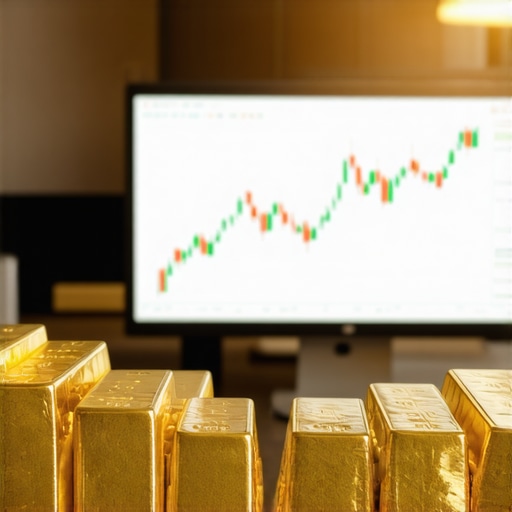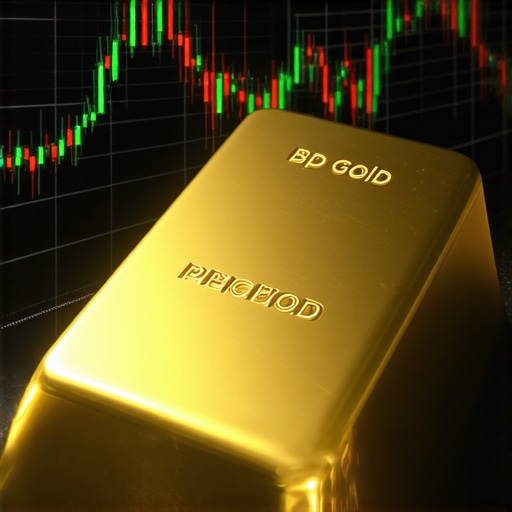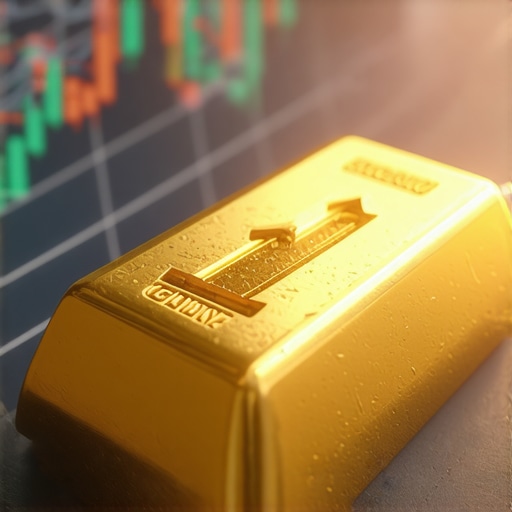Understanding 2025 Gold Price Trends: Key Factors and Insights
The gold market is a dynamic and intricate field, heavily influenced by various factors that can lead to significant price fluctuations. As we look towards 2025, investors are keen to understand the trends in gold prices to make informed decisions. Historically, gold has been seen as a safe haven during times of economic uncertainty, and this trend is likely to continue. The future of gold prices will be shaped by a confluence of market forces, including geopolitical events, inflation rates, and demand from both consumers and central banks.
Central banks around the world have been increasing their gold reserves, which is a crucial factor influencing gold price dynamics. In 2025, this trend is expected to persist. As central banks diversify their assets and hedge against inflation, their demand for gold could create upward pressure on gold prices. This behavior often reflects a broader strategy to stabilize national economies amidst global uncertainties. Investors should pay close attention to central bank activities as they can provide valuable insights into future price movements.
Moreover, inflationary pressures are anticipated to be a significant concern in 2025. As the costs of living rise and currencies fluctuate, gold often emerges as a reliable hedge against inflation. Understanding how gold serves as a hedge can help investors navigate potential market challenges. With inflation rates projected to rise, the allure of gold as a stable asset may increase, driving demand and consequently, prices.
Geopolitical Events and Their Impact on Gold Prices
Geopolitical events frequently create volatility in financial markets, and gold is no exception. In 2025, ongoing tensions in various regions may lead to increased uncertainty, prompting investors to shift towards gold as a protective measure. The impact of geopolitical events on gold prices has historically been significant, and understanding these relationships can provide essential insights for potential investors. For instance, conflicts, trade disputes, or changes in government policies can all have profound effects on gold demand.
Furthermore, shifts in global economic policies can also influence gold prices. For example, if major economies adopt policies that weaken their currencies, it could result in higher gold prices in terms of those currencies. Investors should remain vigilant about global policy changes and their direct impact on the gold market.
Gold Supply and Demand Trends in 2025
The interplay of gold supply and demand is another critical factor that will shape the market in 2025. While demand is expected to remain strong due to investment and jewelry consumption, supply constraints could also impact pricing. Mining output, geopolitical issues in gold-producing countries, and environmental regulations affecting mining practices can all contribute to supply challenges. Understanding these supply dynamics is essential for any investor looking to capitalize on gold market trends.
As the year unfolds, keeping an eye on these trends will be vital for investors. Engaging with resources that provide insights into gold demand trends can offer valuable information for anticipating market shifts and making strategic investment choices. In conclusion, the landscape for gold prices in 2025 will be shaped by a variety of factors, from inflation and central bank policies to geopolitical events and supply issues. Investors who stay informed and adapt their strategies accordingly will be better positioned to navigate this evolving market.
Influence of Economic Indicators on Gold Prices
As we delve deeper into the 2025 gold price trends, it is crucial to consider various economic indicators that can influence gold prices. Key metrics such as interest rates, unemployment rates, and overall economic growth can significantly affect investor sentiment towards gold. For instance, when interest rates are low, the opportunity cost of holding gold diminishes, often leading to increased demand. In 2025, if central banks maintain lower interest rates in response to economic challenges, gold may become even more attractive to investors.
Additionally, the state of the global economy can impact gold prices. A robust economy may lead to higher consumer spending, which could reduce the appeal of gold as a safe haven. Conversely, signs of economic slowdown can trigger a flight to safety, driving up gold prices. Investors should keep an eye on economic reports and forecasts to gauge potential impacts on gold demand and pricing.
The Role of Technology in Gold Trading
Another interesting aspect to consider is how technology is reshaping the gold trading landscape. Innovations such as blockchain technology and online trading platforms are making gold investments more accessible. These advancements allow investors to trade gold more efficiently and transparently, potentially increasing overall market participation. Investors interested in leveraging these technologies should stay informed about the latest developments. For instance, understanding how technology can stabilize investments in gold can lead to more strategic trading decisions.
Understanding Gold Stocks and ETFs: Investment Alternatives
For those looking to diversify their gold investments, gold stocks and exchange-traded funds (ETFs) present viable alternatives. Gold stocks represent shares in mining companies, which can provide leveraged exposure to gold price movements. However, investing in gold stocks comes with its own set of risks, including operational issues and management performance. Understanding these dynamics is essential for any investor looking to explore this route. To learn more about this approach, check out comparing gold stocks and mutual funds for informed decision-making.
On the other hand, gold ETFs offer investors a convenient way to invest in gold without the need for physical storage. These funds track the price of gold and can be traded like stocks, providing liquidity and flexibility. As the popularity of gold ETFs grows, understanding their benefits and drawbacks is crucial for making informed investment choices.
The Impact of Global Events on Gold Market Sentiment
Global events, from economic sanctions to trade agreements, can have immediate effects on gold prices. For example, tensions arising from geopolitical conflicts often lead to spikes in gold demand as investors seek safety. In 2025, monitoring global developments will be essential for anticipating shifts in market sentiment. The impact of global events on gold can be profound, and those who stay informed will be better positioned to navigate the fluctuations.
Evaluating Market Sentiment: Tools and Techniques
Understanding market sentiment is vital in assessing gold price trends. Various tools and techniques, such as sentiment analysis and trend indicators, can provide insights into investor behavior. Utilizing these resources can help investors gauge the prevailing mood in the market and make more informed decisions regarding their gold investments. For example, analyzing trends in the gold market can offer clarity on potential buying or selling opportunities.
As we move forward, it’s imperative for investors to remain adaptable and informed. The gold market is influenced by a complex interplay of factors, and those who actively engage with these dynamics will be better equipped to make strategic investment choices as 2025 unfolds.
Understanding Market Volatility and Its Effects on Gold Prices
Market volatility is a crucial aspect that can significantly influence gold prices. In 2025, as we navigate through economic uncertainties, fluctuations in the stock market may lead investors to seek refuge in gold. This historical trend suggests that during periods of high volatility, gold often acts as a stabilizing asset. Investors should keep an eye on the stock market’s performance and its correlation with gold movements. For instance, when equities decline, gold prices typically rise as a protective measure for wealth preservation.
Interest Rates and Their Influence on Gold Investment
Another pivotal factor affecting gold prices is the level of interest rates. In 2025, if central banks decide to maintain or lower interest rates, the opportunity cost of holding gold diminishes. This scenario can lead to increased demand for gold as an investment, as it becomes more attractive compared to interest-bearing assets. Investors should monitor interest rate trends as they can provide insights into potential movements within the gold market.
The Role of Housing Market Trends on Gold Prices
The housing market is another economic indicator that can impact gold prices. A booming housing market usually signals economic strength, which might reduce the demand for gold as a safe haven. Conversely, if the housing market shows signs of weakness, it could lead to increased interest in gold as an alternative asset. Keeping track of housing trends will help investors better gauge the overall economic environment and its potential effects on the gold market.
Understanding Global Trade Dynamics and Gold Prices
Global trade dynamics also play a critical role in shaping gold prices. Trade tensions, tariffs, and international agreements can lead to fluctuations in currency values, which in turn affect gold prices. In 2025, as nations navigate complex trade relationships, the impact on gold prices could be significant. For instance, a weaker U.S. dollar often correlates with higher gold prices, as gold becomes cheaper for foreign investors. Staying informed about global trade developments will provide valuable context for predicting gold price trends.
Technological Advancements in Gold Trading
The landscape of gold trading is evolving rapidly, thanks to technological advancements. Innovations such as blockchain and AI-driven trading platforms are enhancing the efficiency and transparency of gold transactions. In 2025, investors who leverage these technologies can benefit from more streamlined trading processes. Understanding how technology can optimize gold investments will be crucial for those looking to maximize their returns.
Demographics and Their Impact on Gold Demand
Demographic trends also influence gold demand significantly. As emerging markets, particularly in Asia, continue to grow, the demand for gold jewelry and investment is expected to rise. Cultural factors, income growth, and population dynamics in these regions will play key roles in shaping gold’s market trajectory. Keeping an eye on demographic shifts and their impact on gold demand can provide investors with foresight into potential price movements.
Gold as a Strategic Asset in Investment Portfolios
Investing in gold is not merely about buying a commodity; it is about integrating a strategic asset into a broader investment portfolio. As we analyze the investment strategies for gold in 2025, understanding how gold interacts with other asset classes is paramount. Gold typically exhibits a negative correlation with stocks, meaning when equity markets falter, gold often shines. This makes gold a vital component for risk-averse investors seeking stability in turbulent times.
Creating a Balanced Investment Strategy with Gold
A balanced investment strategy should not overlook gold as a hedge against market volatility. By incorporating gold into a diversified portfolio, investors can mitigate risks associated with stock market fluctuations. As discussed in our comprehensive guide on the role of gold in a diversified investment portfolio, having gold can enhance overall portfolio performance, especially during economic downturns.
Evaluating Gold Mining Stocks as an Investment Opportunity
While physical gold is a popular choice for many investors, gold mining stocks present another avenue worth exploring. These stocks offer exposure to gold prices with the added potential for capital appreciation. However, investing in mining stocks comes with unique risks, including operational challenges and management issues. Understanding these factors is crucial for those considering this investment route. For a deeper dive, refer to our article on maximizing gains through gold mining stocks.
Gold ETFs: An Accessible Investment Option
Gold exchange-traded funds (ETFs) have gained popularity among investors due to their ease of use and liquidity. They offer a practical way to invest in gold without the complexities of storage and security. Gold ETFs typically track the price of gold and can provide returns similar to physical gold investments. This makes them a favorable option for those looking to enhance their investment strategy. To learn more about this investment vehicle, check out our guide on investing in gold ETFs.
The Importance of Timing in Gold Investments
Timing can significantly impact the success of gold investments. With the market influenced by various factors, including economic conditions and geopolitical events, understanding when to buy or sell gold is essential. For instance, if inflation rates are predicted to rise, as discussed in our article on gold as a hedge against inflation, investors may want to increase their gold holdings in anticipation of price surges. By keeping abreast of market trends and predictions, investors can make informed decisions that align with their financial goals.
Anticipating Future Gold Demand: A Look Ahead
As we approach 2025, anticipating future demand for gold will be crucial for investors. Factors such as global economic recovery, technological advancements, and changing consumer preferences can influence gold demand. For example, as emerging markets continue to grow, particularly in Asia, the demand for gold jewelry and investments is projected to rise. Investors should stay informed about these trends to position themselves effectively in the gold market. Further insights can be found in our analysis of the latest trends in gold demand.
Frequently Asked Questions About Gold Prices in 2025
What factors will influence gold prices in 2025?
Gold prices in 2025 will be influenced by a variety of factors, including inflation rates, central bank policies, geopolitical events, and overall economic conditions. As these elements interact, they will shape the demand for and supply of gold, ultimately affecting its price.
How does inflation affect gold prices?
Gold is often viewed as a hedge against inflation. When inflation rates rise, the purchasing power of currency declines, leading investors to seek stability in gold. Consequently, as inflation escalates, the demand for gold typically increases, which can drive prices up.
What role do central banks play in gold pricing?
Central banks play a significant role in gold pricing by adjusting their gold reserves based on economic conditions. Increased purchases of gold by central banks can lead to higher demand and prices. Investors should monitor central bank activities to gauge potential price movements.
How can geopolitical events impact gold prices?
Geopolitical events, such as conflicts or trade disputes, often create uncertainty in financial markets, prompting investors to turn to gold for safety. This increased demand during turbulent times can lead to spikes in gold prices.
What are gold ETFs and why are they popular among investors?
Gold exchange-traded funds (ETFs) are investment vehicles that track the price of gold and can be traded like stocks. They offer investors a convenient way to gain exposure to gold without the need for physical storage, making them a popular choice for those looking to diversify their portfolios.
Is investing in gold mining stocks a good strategy?
Investing in gold mining stocks can provide leveraged exposure to gold prices, potentially leading to higher returns. However, these stocks come with risks, including operational challenges and management performance. Investors should weigh these factors carefully before investing.
How do interest rates affect gold investments?
Interest rates have a direct impact on gold investments. When interest rates are low, the opportunity cost of holding gold diminishes, making it a more attractive investment. Conversely, higher interest rates can lead to decreased demand for gold as investors seek better returns in interest-bearing assets.
What demographic trends are affecting gold demand?
Demographic trends, particularly in emerging markets, are significantly influencing gold demand. As populations in these regions grow and incomes rise, the demand for gold jewelry and investment is expected to increase, impacting overall market dynamics.
How can I stay informed about gold market trends?
Staying informed about gold market trends requires regular engagement with financial news, analysis from trusted sources, and monitoring economic indicators. Utilizing resources such as financial websites, market reports, and expert analyses can provide valuable insights into the evolving gold market.
Authority Resources for Gold Investment Insights
For comprehensive insights into gold prices and investment strategies, consider referring to the following trusted resources:
- World Gold Council – Provides extensive research and analysis on gold markets, including demand trends and investment strategies.
- Investopedia – Offers educational content and articles on gold investing, market trends, and financial strategies.
- Kitco – A leading source for precious metals market news, prices, and expert commentary.
- Bloomberg – Delivers real-time financial news, market data, and analysis, including insights on gold and commodities.
- Reuters – Offers global news and analysis related to financial markets, including gold pricing and investment trends.
Conclusion: Navigating Gold Price Trends in 2025
As we look toward 2025, understanding the various elements influencing gold prices is essential for investors. From economic indicators and geopolitical events to demographic shifts and technological advancements, the landscape for gold investment is complex yet promising. By staying informed and adapting strategies accordingly, investors can effectively navigate the evolving gold market and harness its potential as a stable asset. As the trends unfold, those who remain proactive and engaged will be better positioned to capitalize on opportunities within the dynamic world of gold investing.










This comprehensive overview of the factors influencing gold prices in 2025 is quite insightful. I’ve been particularly interested in how geopolitical tensions tend to spike gold demand during uncertain times. In my own experience, I’ve noticed that even localized conflicts can sometimes have ripple effects on global markets, especially when they involve major economies. I wonder, with so many dynamic influences like technological advancements and demographic shifts, how do investors best prioritize which factors to monitor? Do you think one element will outweigh others in shaping gold’s trajectory this year? It’s clear that staying informed through reputable sources is essential, but balancing all these variables seems quite challenging. I’d love to hear from others about their strategies for keeping an eye on such a complex and ever-changing landscape.
This analysis really highlights how multifaceted the gold market in 2025 is. I’ve personally been tracking central bank activities, especially their increasing gold reserves, since those movements can signal big shifts ahead. I agree that geopolitical tensions tend to boost gold demand, but I’m curious about how technological innovations, like blockchain, might streamline trading and influence liquidity in this space. In my experience, staying on top of these developments can give investors a significant edge. What strategies do others find most effective for balancing the monitoring of macroeconomic factors versus micro-level market signals? Do you think focusing on certain economic indicators, such as interest rates or inflation, provides a clearer picture, or is it more about developing a holistic view? It seems like a lot to juggle, but understanding these dynamics is so crucial for informed investing in gold, especially as the landscape evolves so rapidly.